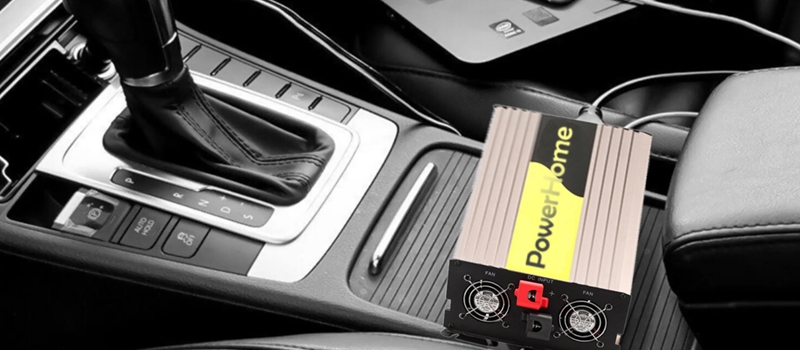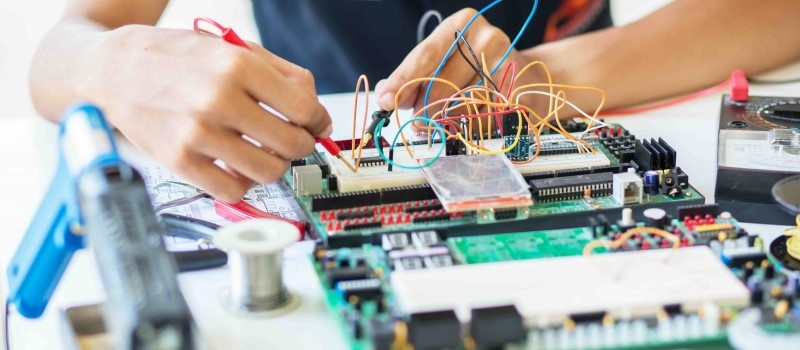Providing great convenience to people's life, power inverters that can convert DC power to AC power, especially in household appliances such as air conditioners, refrigerators, TVs, and in outdoor and vehicle-mounted situations. In order to optimize the use of inverters in many situations, users should pay attention to the correct operation of power inverters. This blog will provide you with some tips on the proper use of power inverters.
Considerations before Using

-
DC Power Matching: Before connecting the inverter, make sure the DC input voltage of the inverter matches the voltage of the power supply device (e.g. battery), such as the common 12V, 24V or 48V DC input. Mismatched voltages may result in damage or inefficient operation of the inverter.
-
Power Requirement Assessment: Select the appropriate power inverter based on the rated power of the electrical equipment and the peak starting power. Make sure that the continuous output power of the inverter is at least equal to the rated power of the electrical appliance, and the instantaneous peak power can meet the high current demand of the appliance during startup, especially for devices with high startup current such as refrigerators and air conditioners.
For example, 140W power inverter can be used for a 29-inch color TV and a VCD player, 450W power inverter can be used for general power tools, and 800W power inverter can be used to drive a small microwave oven.
-
Safety and Cooling: Place the inverter in a well-ventilated, dry environment that is not easily affected by moisture, away from fire sources and flammable substances, and ensure that there is enough cooling space around the device. It is strictly prohibited to stack objects on top of or near the device to prevent affecting heat dissipation and safety.
-
Read the Manual: Before you start to use it, read the manual carefully to understand the safety precautions, usage and working principle of the power inverter.
How to Use
-
Connecting DC Power: Connect the DC input of the inverter to a DC power source, such as a battery or an electric battery. Pay attention to the positive and negative terminals when connecting, usually using the red wire for positive and the black wire for negative. Be sure to turn off the car engine if you want to connect the power inverter to the car.
-
Starting the Inverter: Turn on the inverter's switch and follow the indicator lights or display on the inverter to confirm that it has started working.
-
Using AC Power: After confirming that the inverter is operating properly, connect your AC appliances to the inverter's output sockets. The total power of the connected appliances should not exceed the power rating of the power inverter to prevent accidents.
-
Monitor the Inverter: During use, pay attention to monitor the status of the inverter, including input and output voltage, current and power. If the inverter has overload protection, when the load exceeds the rated power of the inverter, the inverter will automatically shut down to prevent damage.
-
Turn Off the Inverter: When finished using the inverter, first unplug the AC appliances from the inverter socket, then turn off the inverter, and finally disconnect the DC power supply.
Safety Precautions

The inverter relies on the internal electronic circuits to automatically realize the battery protection function. When using the Inverter and experiencing stoppage and alarm phenomena, check the following points:
- Whether the power of the driven electrical equipment exceeds the rated power of the inverter.
- Whether the inverter is well connected to the battery and the electrical equipment.
- Whether the shutdown during use is a temperature alarm, at which time it can continue to be used after a period of interruption.
- Check the voltage of the battery power system and read the manual carefully before use.
- Special attention should be paid to the fact that in extreme cases, even when used at rated power, occasional overheating or even burnout may occur.
Maintenance & Storage
- Regularly check the connections and components of the inverter to ensure that there is no damage or wear.
- When not in use for a long period of time, store the inverter in a dry, ventilated environment.
- If the inverter malfunctions, stop using it and contact a service professional for repair.
Always make sure to comply with relevant electrical safety standards and regulations when using power inverters to avoid safety accidents. Meanwhile, for the use of high-power inverters, it is recommended that installation and maintenance be carried out by professionals. PowerHome is an online store focusing on off-grid living and is committed to providing the most considerate after-sales service to our customers. If you have doubts about using power inverters, please feel free to contact us.
(1).png)
(1).png)